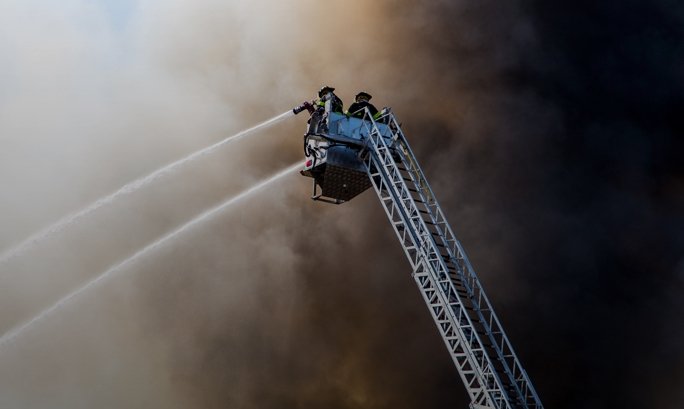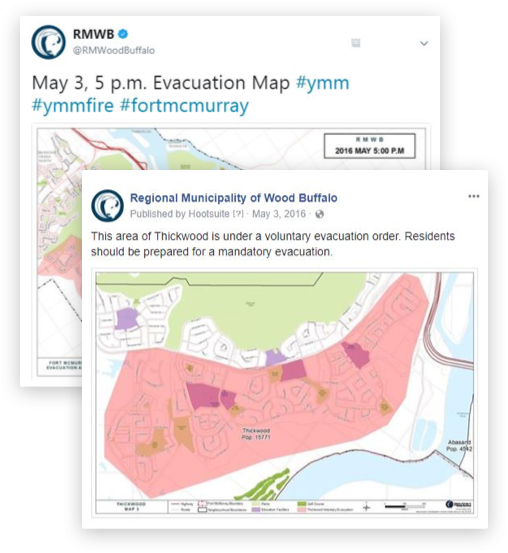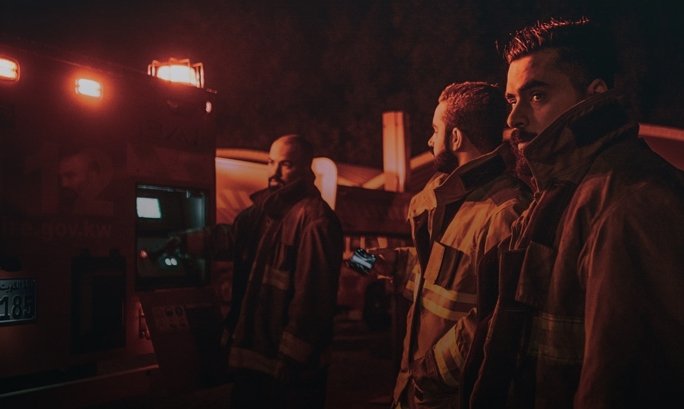RMWB saves lives using Hootsuite for crisis communication
Learn how the Regional Municipality of Wood Buffalo (RMWB) used Hootsuite to effectively streamline and coordinate crisis communication on social media during and after the 2016 Horse River wildfire.

The Regional Municipality of Wood Buffalo (RMWB) is the township that is home to several communities in Alberta—including Fort McMurray. The municipality uses social media across different areas of the organization, including non-emergency communication, and major social events.
On May 3, 2016, the Horse River wildfire (also known as the Fort McMurray wildfire) affected communities in Wood Buffalo. Approximately 88,000 residents had to be evacuated and the community remained under a mandatory evacuation order until June 1, 2016, when residents were able to begin returning home. The fire destroyed 2,579 homes, and residents living in the most-impacted areas were unable to return home for an additional three to five months.
- 8
-
team members collaborated across Alberta
- 4X
-
increase in Twitter followers
- 88,000
-
residents evacuated
What they did

Took to social media to coordinate crisis communication
As wildfire spread across multiple communities, the RMWB’s social media accounts became the principal source of live information for local residents, media, and press. In this state of emergency, locals needed to know where to go, what to do, and when to do it.
On a day when every piece of information shared was integral to the well-being of more than 88,000 residents, RMWB took to social media. Its communications team made sure that all distributed information was accurate and up-to-date, and that the team responded quickly to those in need.
In addition to RMWB’s social media accounts becoming an emergency response channel during the crisis, the team also became a source of emotional support for residents returning to their homes when re-entering the region. As part of the recovery phase, the RMWB continues to support its community by using its social media presence.
How they did it
Monitored hashtags and used social streams to stay organized
During the wildfire, RMWB staff monitored its social media accounts and published content around the clock. Using Hootsuite social streams, the RMWB was able to coordinate a social media presence across multiple accounts and channels using a single interface.
Having Hootsuite streams side-by-side made it easy to manage inbound and outbound messages, allowing the RMWB to stay both organized and connected during a time of crisis.
If we were to use Twitter natively—it would have been next to impossible to manage the sheer volume of requests. Hootsuite streams allowed us to see incoming and outgoing messages, prioritize responses, and monitor keywords.
Thanks to social listening with Hootsuite streams, the RMWB was able to quickly detect and respond to posts by residents in need of help—which included dispatching first responders to help those in need.
Even when users didn’t mention the municipality's social handle directly, the RMWB was able to track conversations through keyword monitoring. By listening for keywords and phrases related to the wildfire, the team was able to quickly find and respond to questions and calls for help on social channels—and send help when needed.
Social media facilitated our ability to share accurate and immediate news with residents who were dispersed around the world.
To ensure consistency, the RMWB stopped sending out information from their other social media accounts—like @WBEcDev, an account for promoting local businesses. This guaranteed that the RMWB’s official social handles—like @RMWoodBuffalo on Twitter—were the central source of truth for residents, press, and the public.

Used Hootsuite to work cross-functionally and cross-regionally
Residents weren’t the only ones displaced during the crisis. While citizens were advised to evacuate, so was the RMWB communications team. So how could the team continue to serve the community and communicate effectively to citizens, the media, and the public while being dispersed and relocated?
After evacuating the city, the team needed to continue working closely together despite being physically dispersed across the province of Alberta. Using Hootsuite as a virtual command center, 8 team members in scattered locations were still able to work together across locations, teams, and social media networks.
The results
The team’s most positive outcome was the evacuation of approximately 88,000 residents. People knew where to find life-saving information—and they got it when they needed it. Understandably, RMWB was under a lot of stress during the crisis, but the team was still able to collaborate across separate locations.
Ninety-five percent of the RMWB’s tweets posted during the wildfire were shared using Hootsuite. RMWB used social streams and hashtag monitoring to make sure their social media activity was managed as efficiently as possible.
During the emergency, the team shared critical response information, but also words of encouragement written with a real, human voice and tone to better connect with distressed residents. Residents and readers around the world following the natural disaster responded to the heartfelt tone of the RMWB’s daily social updates.
Our organization now clearly recognizes the value of leveraging social media in a crisis. As a result of the success of these practices we’ve received increased internal resources, support, and recognition for social media. We recommend that all municipalities prepare and support the use of a social media dashboard during a crisis.
The time and effort RMWB saved as a result of managing social media efficiently contributed to the team’s success. In fact, RMWB was highlighted on a Twitter blog as one of the top ten Twitter accounts in Canada at the time. As a result of their use of social media during the wildfire, RMWB also gained thousands of followers on its corporate social media accounts—a 336 percent increase on Twitter and 128 percent increase on Facebook.
The municipality also gained an increase in public trust. With their focus on crisis communication and support to those returning to their homes after the fire, the team’s social media posts brought a genuine and personal touch to RMWB as a public organization.
With this following, RMWB is now able to reach more citizens on social media and build their brand as a trusted source of information.